Class II
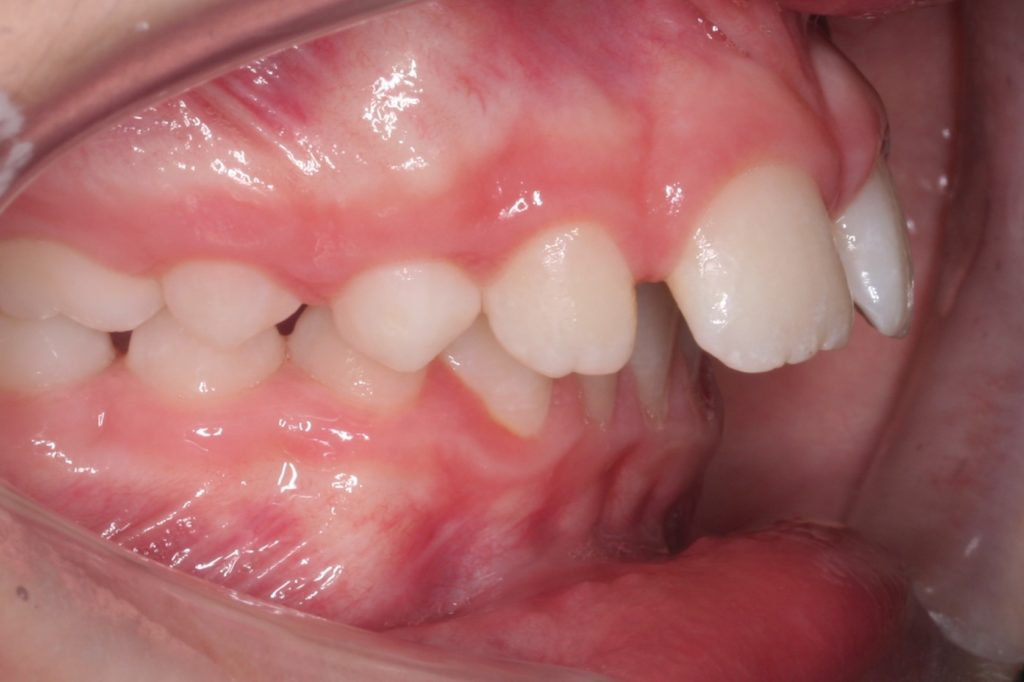
Class II problems represent abnormal bite relationships in which the upper jaw and teeth project ahead of the lower jaw called “overjet”. Class II patients usually exhibit a convex facial profile with a deficient chin prominence. Typically, a Class II problem is inherited. Persistent thumbsucking can also aggravate these problems. Correcting of this disorder generally requires influencing facial growth to bring the upper and lower jaws and teeth to their proper position.
Class II correction options include jaw growth modification (ie:headgear), extraction treatment, and/or a jaw surgery.
Class III

Class III problems are primarily genetic in origin. In this instance, the lower jaw and teeth are displaced to the front of the upper jaw structures. The facial appearance may give the impression that the lower jaw is excessively large, but in many cases the lack of upper jaw is at fault.
Anterior Crossbite
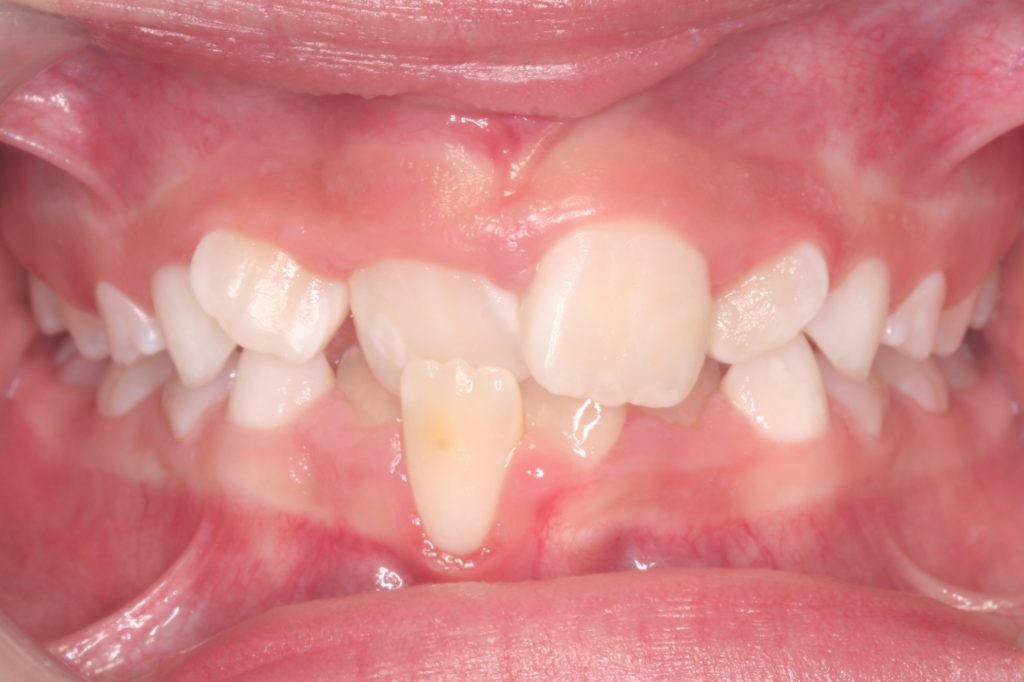
An anterior crossbite exists when one or more of the upper front teeth fall behind the lower front teeth when biting. This situation is potentially traumatic for the involved teeth. Phase I treatment is often indicated.
Posterior Crossbite
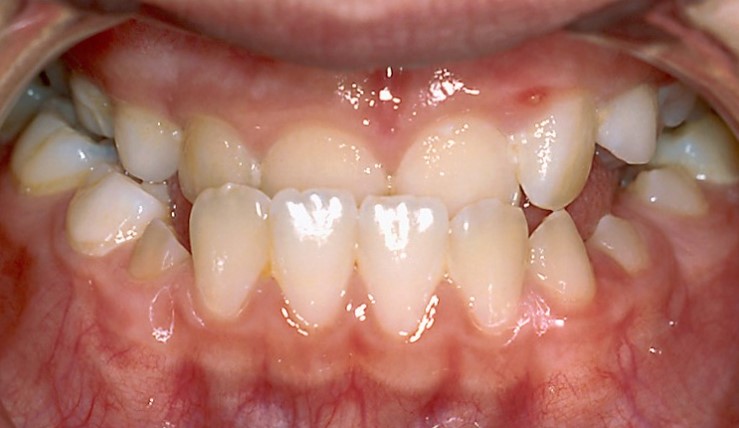
A posterior crossbite exists when one or more of the upper back teeth fall inside of the lower back teeth when biting. A posterior crossbite is usually corrected with an expander.
Crowding
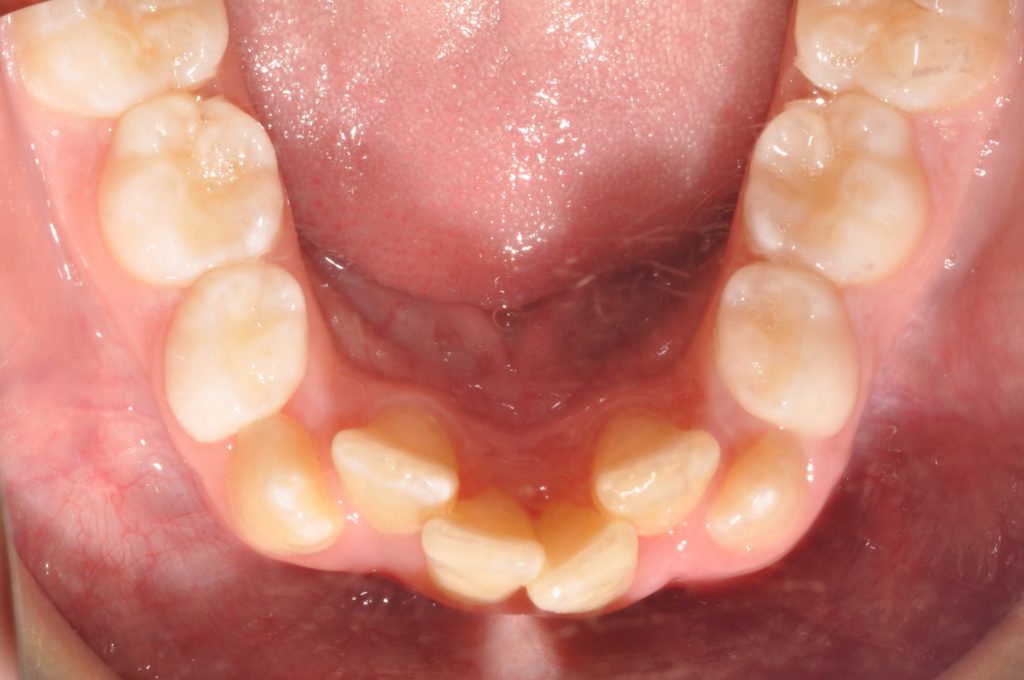
Crowding of the teeth is the most common problem associated with the need for orthodontic care. Although many factors contribute to the dental crowding, this problem usually stems from a discrepancy between space available in each jaw and the size of the teeth. Crowding may be associated with periodontal problems.
Deepbite
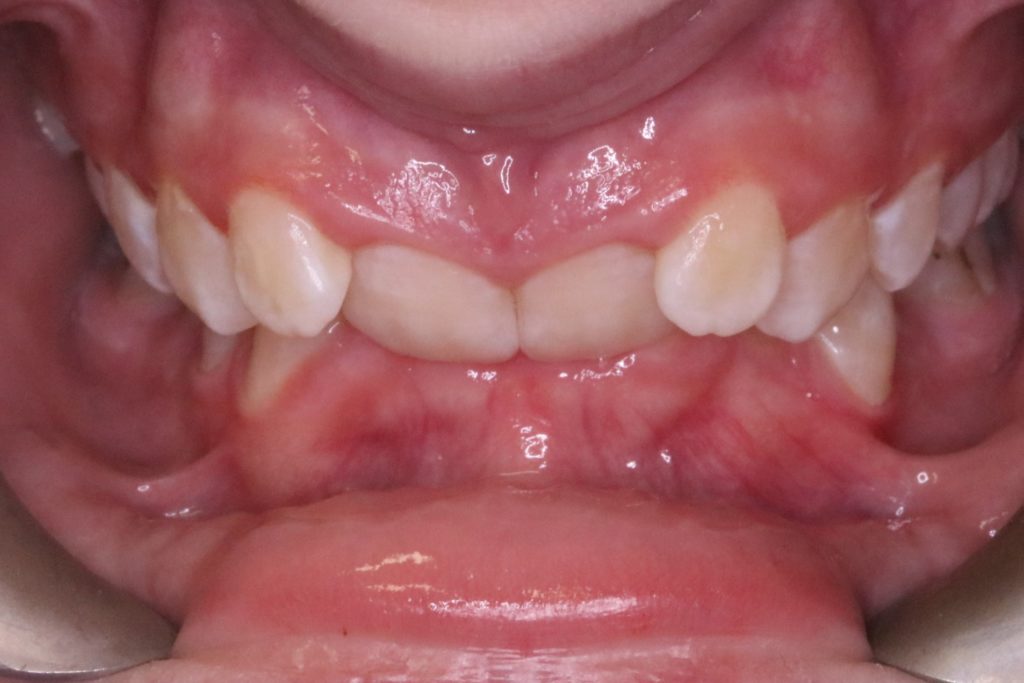
A deepbite (deep overbite) exists when the upper front teeth cover up too much of the lower front teeth when biting. Associated problems with a deepbite include increased rate of wear of the lower front teeth and biting into the roof of the mouth.
Openbite
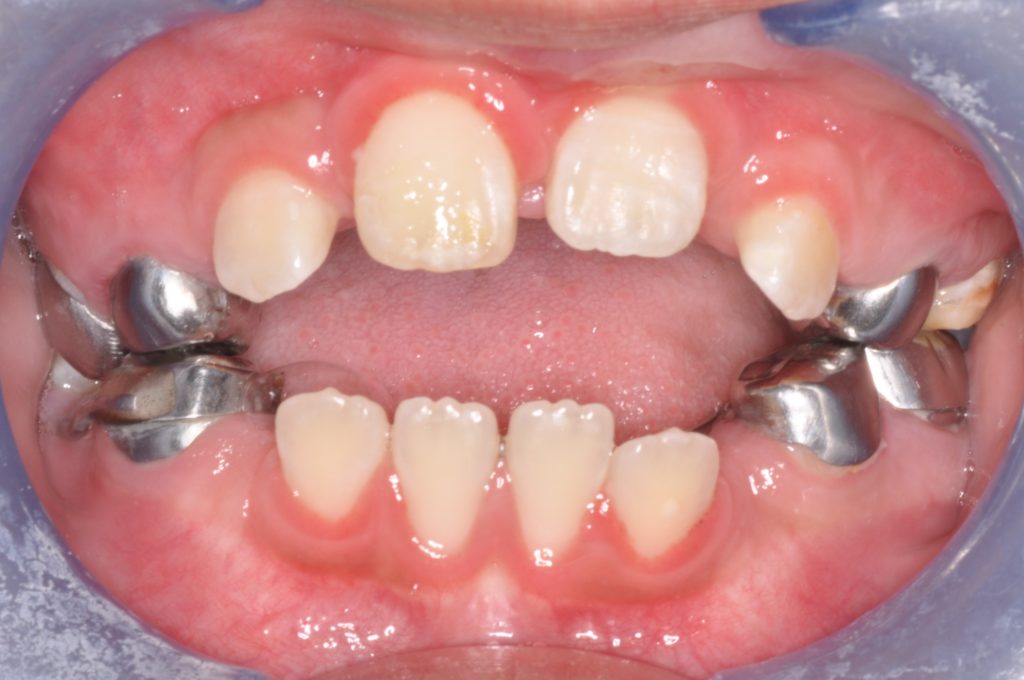
An openbite exists when the upper and lower front teeth do not touch when biting. This can result from finger habits, tongue habits, and/or jaw discrepancies. Associated problems with an openbite include increased wear of the back teeth, mouth breathing, and speech difficulties.
Spacing

Spaces between teeth are another common problem associated with the need for orthodontic care. Like crowding, spacing may be related to a tooth-to-jaw size disharmony. Gum tissue attachment called “frenum” is also a common cause of spacing between the front teeth. Excessive vertical overlap of the front teeth as well as incisor protusion may lead to spacing. Other contributing factors include atypical or unusually narrow teeth, and missing or impacted teeth.